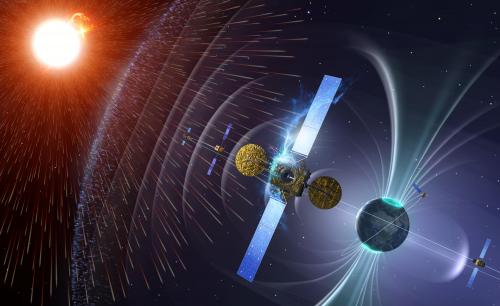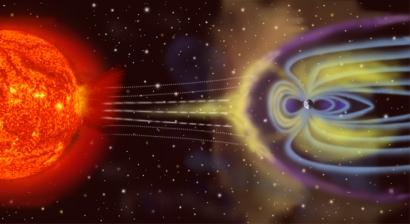Why do we study the solar wind?
The solar wind is an important research topic for astronomers. There are indeed a large number of phenomena, which they do not (or only partially) understand.
For example, our understanding of the flow of a collection of charged particles in a magnetic field (just like in the solar wind) is still very incomplete. One hopes that a better understanding of the Sun and the solar wind will give us insight in the behaviour of stars and stellar winds elsewhere in the universe.
For physicists, the solar wind is a big laboratory for research into the behaviour of a collection of charged particles (a plasma). Moreover, a lot of connections exist between the study of the solar wind and terrestrial applications, like controlled nuclear fusion.
How does solar wind affect human activity on Earth?
Traveling through our space environment
Since the solar wind fills the space between the planets, it is important to know its main characteristics when we want to travel through this environment with spacecraft. The solar wind is a determining factor for the immediate environment of the Earth.
Fortunately, our Earth has a magnetic field that can stop the biggest part of the charged particles of the solar wind. Yet, some of these particles are able to enter the atmosphere, where they cause, for example, polar lights.
Solar wind storms causing power failure and satellite break downs
Once in a while "storms" also occur. In 1989, as a consequence of such a storm, large parts of Canada and the United States experienced a major power failure. Variations in the solar wind cause electric storms and corrosion in the many kilometer long pipelines of Alaska.
Storms disturb radio transmissions, and also space travel has to deal with certain consequences. The charged particles of the solar wind can be compared to radioactive radiation. It isn't the first time that a satellite breaks down due to the intense radiations during a storm.




